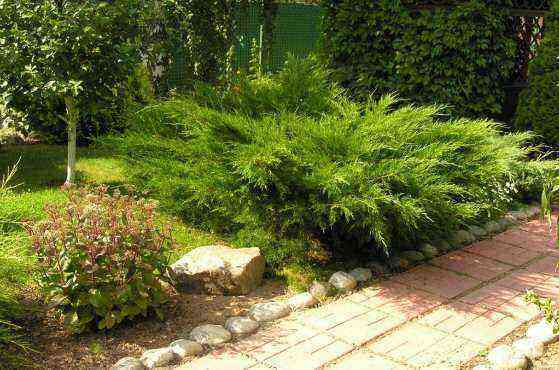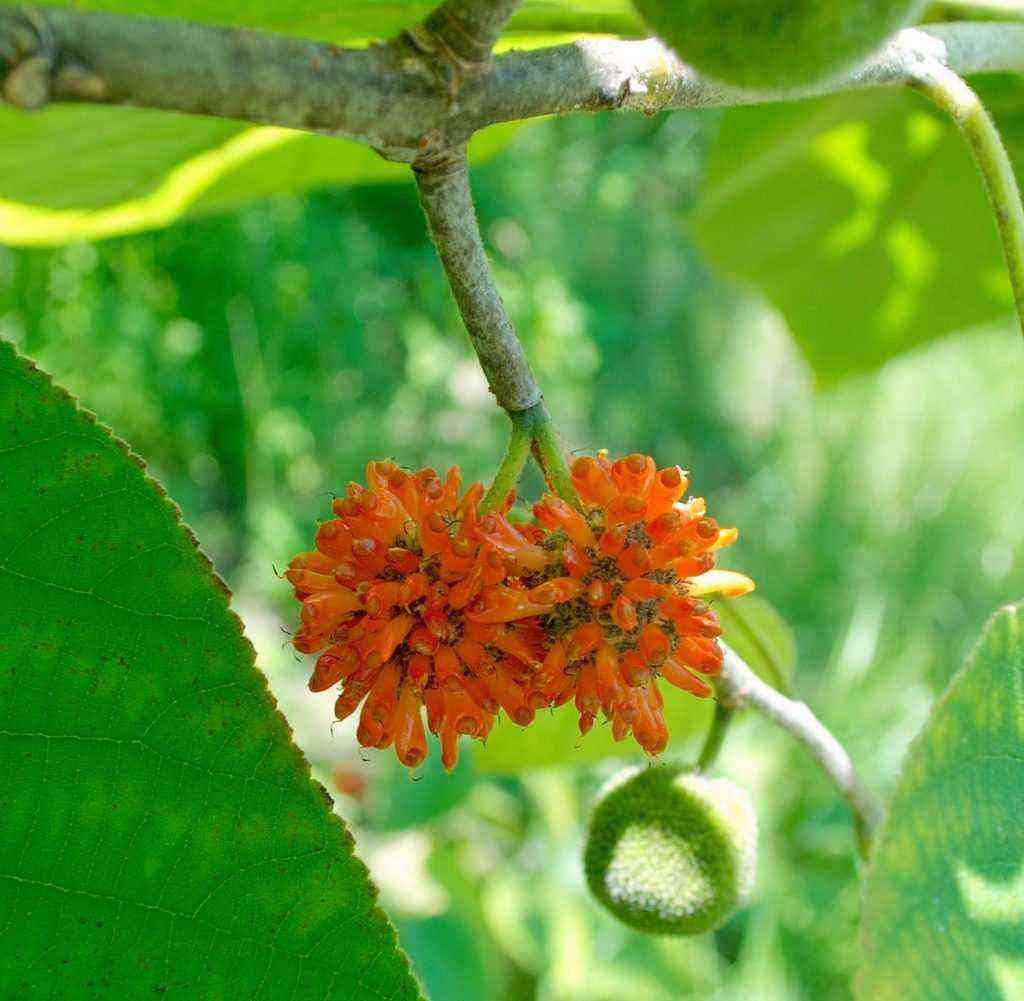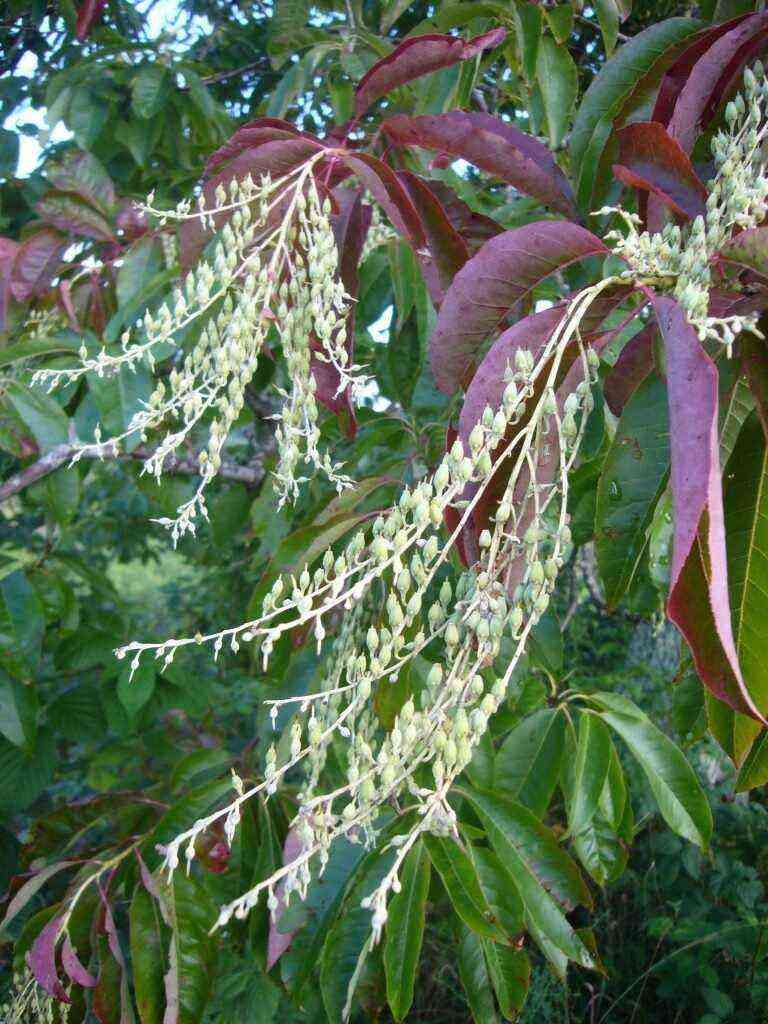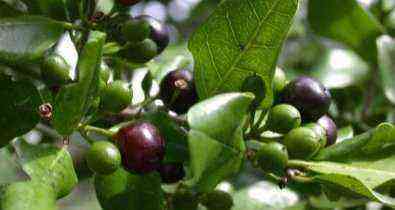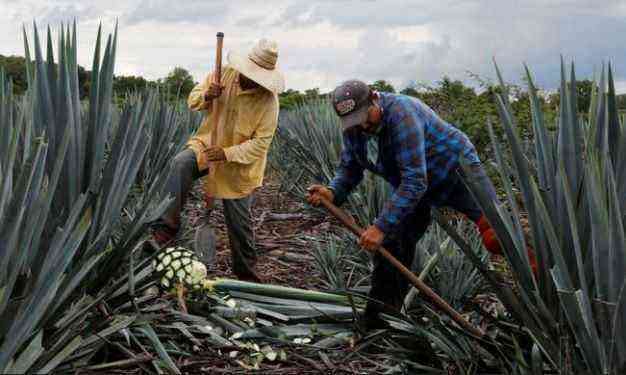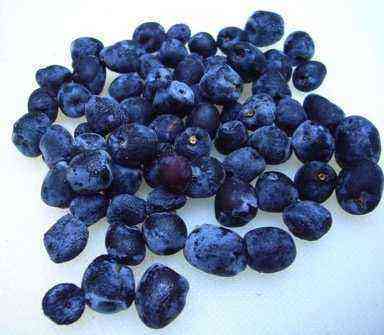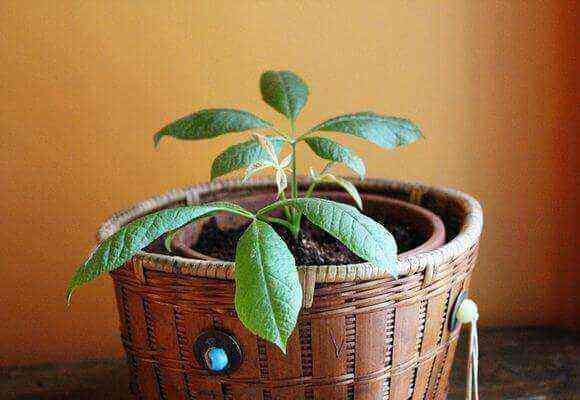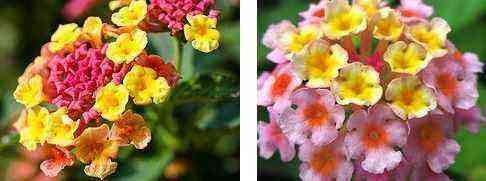Thuja on the garden plot looks attractive all year round – bright, unpretentious, decorative. It looks great in both single and group plantings, perfect for creating a hedge. But how to choose and correctly plant thuja seedlings?
Thuja can be planted in open ground at any time, from early spring to late autumn – even in the latter case, it will have time to strengthen the root system and survive the cold well. You just need to choose high-quality seedlings and carry out the planting process correctly. And we will help you with information.
General care rules
For a tree, they choose a place that is lit, but it can be slightly shaded, for example, near a solid fence or behind a house.

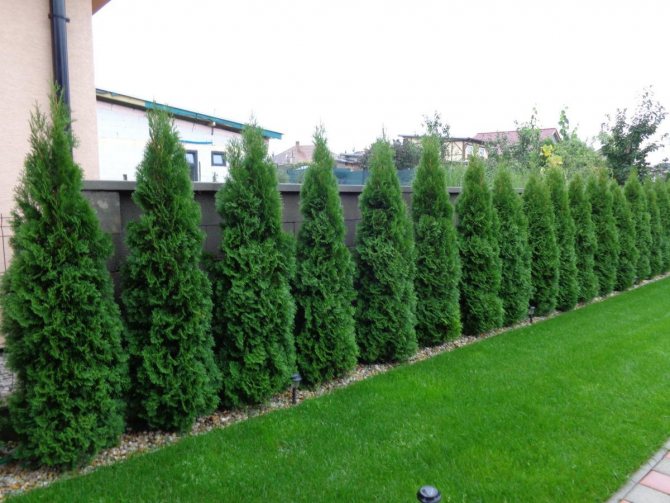
In dark places, conifers do not feel well, since the sunlight necessary for the formation of chlorophyll is absent or insufficient. Such places are usually:
- among tall trees shading young plants with their crown;
Thuja is a moisture-loving plant. Sprinkling can be done daily in summer. The procedure helps to clean the crown of dust, promotes the opening of the stomata of the foliage, which improves gas exchange.
The tree has a shallow root system. In dry summers, the top layer of the earth dries out quickly, forming a dense crust on the surface that does not allow air to pass through. Therefore, it is recommended to mulch the root zone with bark, coniferous needles when planting. If you do not use mulch, you will need to water and loosen the soil frequently to provide oxygen to the roots.
Thuja should be cut frequently. The more regularly you do this, the better the shoots grow and the more magnificent the crown looks.


If a group of plants grows, then they need a place and need to do a side trimming of the shoots. Single plantings involve thinning pruning to provide air access to the trunk and internal shoots. The branches are cut by a third. The optimal time is spring, before the buds bloom.
Top dressing is carried out in autumn and spring. In summer, fertilizers are applied if the soil on the site does not hold nutrients well, for example, on sandy soils.
Plants should be periodically inspected for pests. Ordinary garden aphids can greatly damage the appearance of thuja, therefore, chemicals are used to spray and process the trunk on which the scale insect or other parasites settle.
Plant thuja: fall or spring
To choose the right place, you need to consider the following:
- Pay attention to where the site is illuminated during the day. It is there that it is not recommended to plant thuja, since in the summer it will be greatly dehydrated from the scorching rays. The morning and evening sun is enough for the tree.
- Drafts. The plant does not like them and reacts with weak shoots, sparse branches, yellowing.
- Where the water stagnates. Roots, flooded by groundwater, rot, because respiration and the supply of nutrients to tissues are disturbed. Greens turn yellow and dry. Processes may take 2 years to recover.


The choice of the season when it is better to plant thuja – in spring or autumn – depends on local climatic conditions. If you plant a tree in August, then at least 2,5 months should pass before the onset of cold weather.
During this time, the plant should have time to take root in a new place and restore strength. After that, wintering is not terrible. The later you transplant thuja in autumn, the less time for adaptation and confidence that the tree will overwinter. Therefore, in order to avoid the risk, conifers are planted in the spring.
Gardening Tips
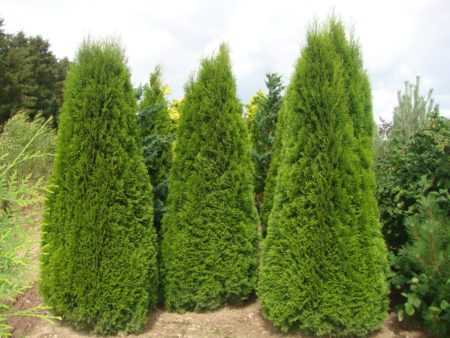
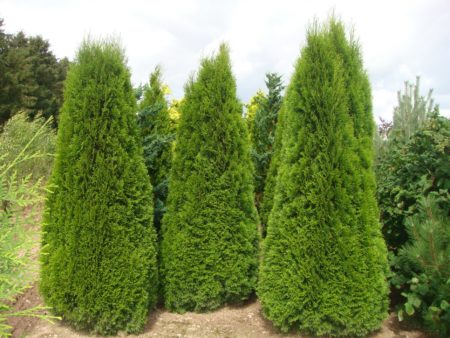
If you have never grown a crop before, then choose the type that best suits the climatic characteristics of your region. For newcomers to summer residents, the western thuja is well suited, since it is unpretentious in care, adapts to any climate. Follow a few simple practical tips, they will help in growing and make it easier to care for:
- Use cool, low hardness water for irrigation. The water can be filtered or allowed to settle. The watering rate for one tree is 10 liters;
- in the summer heat, so that the crown does not heat up, pour it with a hose. Be sure to adjust the pressure of the jet, it should not be strong;
- when pruning, remove about 1/3 of the total number of shoots. The tool (secateurs, knife) must be clean. You can treat it with potassium permanganate for disinfection;
- in the event of the appearance of dead shoots, darkening of the needles, remove the damaged areas immediately. Untimely removal of already spoiled places develops the risk of developing pathogenic microorganisms, and creates a favorable environment for insects.
Attention!
To form the crown of a tree, you can buy special metal frames. They are sold in garden supplies.
With the planting of thuja, your garden will be noticeably greened. The tree is in harmony with cypresses, hydrangeas, acacias, astilbe. If you’ve planted multiple plants, you can create a beautiful hedge over time. A healthy thuja is an ideal solution to a design problem, because you can give it any shape and embody any idea from it.
Step-by-step guide: how to plant a thuja
When a seedling is purchased, the size of its root system is estimated before preparing the pit. The planting hole should be 40 cm wider than the earthen coma and 30 cm deeper. Depending on the variety, the distance between the plants is measured.

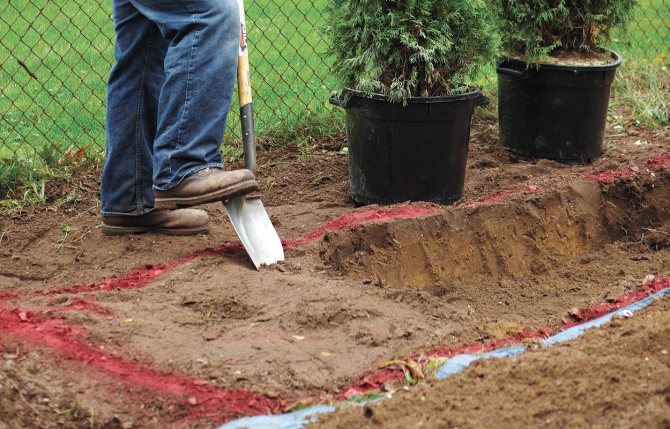
For tall thujas, which grow in height, the distance is 1 m. Wide and high ones are 1,5 – 1,7 m. Low wide ones – 1,5 m. When forming an alley, the distance is maintained from 2 to 4 m.
For landing you need:
- Dig a hole according to the size of the plant.
- Place a bucket of compost or humus on the bottom. Fresh or semi-rotten manure should not be used, since the high nitrogen content is harmful to coniferous crops. Potassium-phosphorus mineral fertilizers are used. But here you can not do without personal experience, since many gardeners have tried several mixtures before choosing the nutrition for the thuja in accordance with the type of soil and its chemical composition.
- Drainage is placed at the bottom. This is especially useful on clayey heavy soils. Part of the soil is mixed with sand or broken brick.
- Plant the plant and sprinkle with soil, then water so that the soil settles and add more earth. Compact the root zone and mulch.
When mulching, you must not touch the trunk and branches, since under the influence of moisture they quickly rebuke and get sick.
Selection of seedlings
In healthy plants, the needles are green, the bark is smooth, without spots and cracks. However, the dead seedlings remain green for a long time. Therefore, it makes sense to take them out of the container and inspect the roots outside the earthen coma. If they are lethargic, dark and smell like rot, then it is wiser to refrain from buying.
Seedlings from containers take root better. In the fall, it is recommended to opt for just this option. You just need to check if the tree is not cramped. The roots should not protrude from the ground and protrude from the drainage holes.
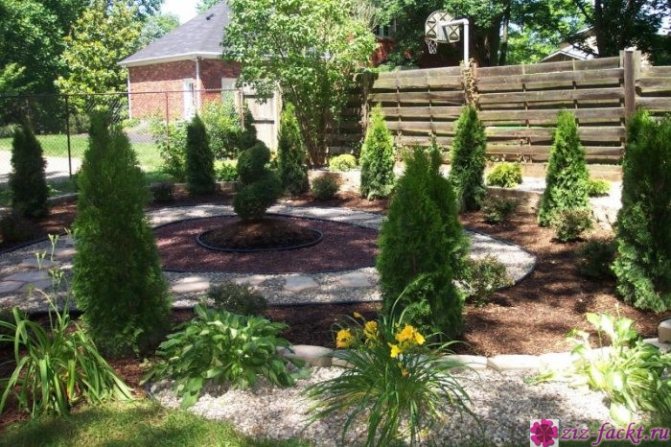
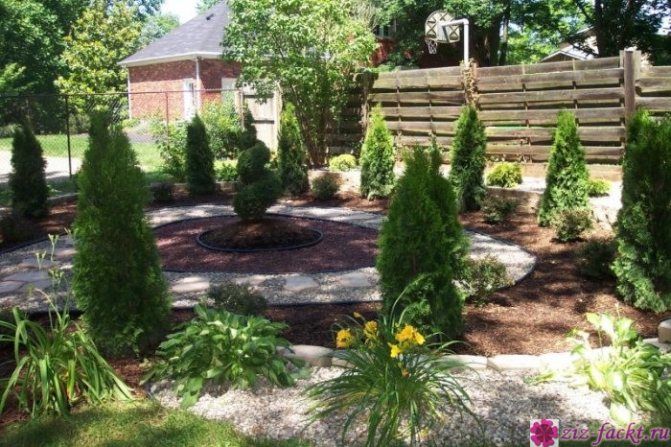
Coniferous feeding
When thuja is planted in autumn or spring, top dressing is applied. Next time it will need to be done in a year or two. If mineral mixtures or organic matter were laid during planting in the fall, then in the spring only general care measures are carried out without feeding.
Video: Features of planting thuja in spring, summer and autumn
From the third year after planting on the site, fertilizing is carried out twice: in autumn and spring. It is better to use easily soluble substances and add them with water. Thus, a good growth can be ensured, since thujas respond well to watering and quickly stretch in height. It is preferable to use organic matter with a low nitrogen content in spring – compost or humus, phosphorus supplements will be useful in summer, potassium is needed in autumn.
Growing from seed or using seedlings
Thuja is propagated by seedlings purchased in a nursery or by seeds. If the seedling is not difficult to plant, then you will have to tinker with the seeds. It can take about 5 years until the seedling can be planted in open ground.
Seeds are harvested in mid-autumn – mid-September or early October. Store them until spring in a well-ventilated cloth bag. Before planting, soak in water or a special nutrient solution for 12 hours. After that, it is added dropwise to a depth of 5 cm and sprinkled with compost or peat. It must be foreseen that seed propagation may not repeat the mother’s forms, and the plant will look different.
You can try to germinate roots in a cuttings taken from an adult plant at the beginning of the growing season – May June. The stalk should have a lignified shoot 7 – 8 mm wide and at least 12 cm long. It is better to cut from the lateral branches – they form roots faster than the apical ones. The stalk is left in water until the root appears. Then you can transplant it into a flower pot in a compost filler.
To accelerate root formation, longitudinal cuts are made along the cuttings and the needles and bark are removed. The cut is made obliquely. These procedures will help to avoid rotting of young roots under the bark. You can use a rooting stimulator, but you need to leave the cutting in such a liquid for no more than a day.
When planting thuja cuttings in pots in autumn or spring, they need to be placed in a warm room, well lit, so that the greens get used to the amount of light. Transfer to a large container is carried out as needed, when the root system fills the entire pot. After a few years, such a seedling is transferred to the street and transplanted.

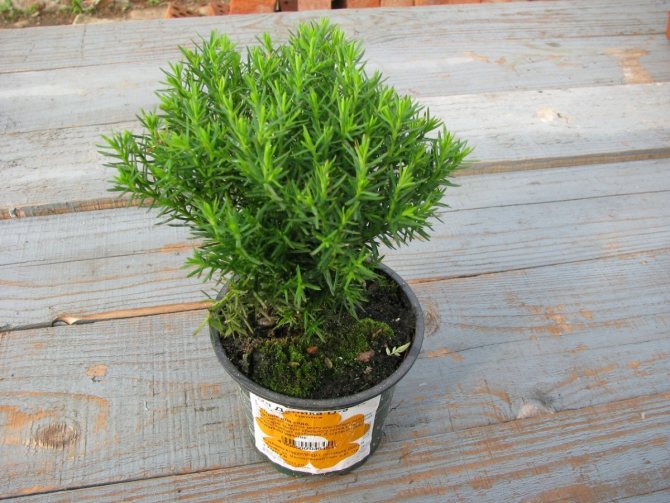
Top dressing is carried out according to the rules: when planting, then a year later when transferring to a new place, and so on.
Winter care and preparation
In the middle lane, western thuja is most often grown, since the eastern one does not take root due to frost. Nevertheless, it is impossible to completely wrap evergreen conifers. This threatens with yellowing and foliage.
Young plants are shown a shelter in the form of a hut made of boards, followed by wrapping in lutrasil. But this applies to very small specimens that completely go under the snow. Further, these activities are not carried out, otherwise in the spring you will have to cut off most of the branches with brown needles.
The crown is tied to large plants so that they do not break under the weight of the snow. The branches are tied in several places and not tight. In winter, during a snowfall, it is necessary to remove snow from the branches so that it does not turn into ice.
Mulching is a mandatory procedure in pre-winter preparation.
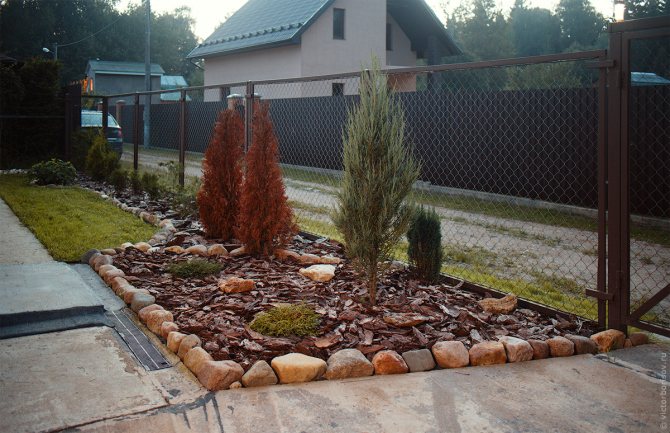

The shelter of the root zone retains moisture and protects the roots from freezing. If in the spring it was found that the bark of the tree was cracked, which often happens with sudden changes in temperature, then such places are covered with garden var.
Description
Thuja is an evergreen coniferous tree or shrub. There are several types and many varieties. At home, it reaches a height of tens of meters and can live for hundreds of years. In Russia, its achievements are more modest – 8-12 m, but giants are not needed for landscaping a summer cottage. On the contrary, there are specially bred dwarf species.
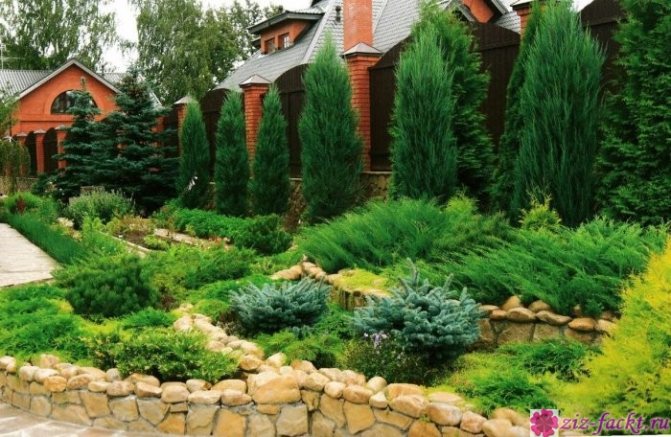
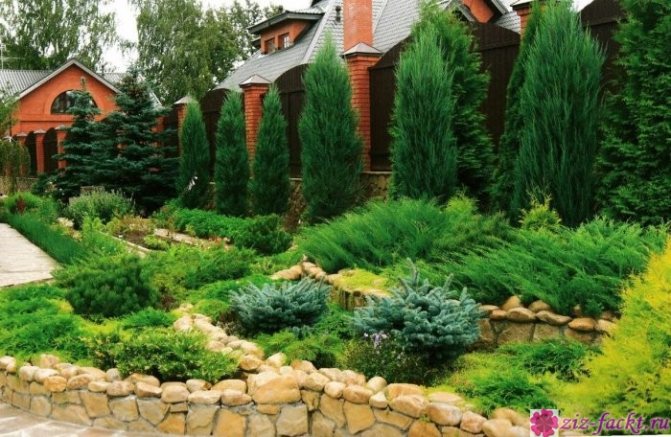
Her needles are not prickly, they are not needles. Thuja is soft to the touch and consists of superimposed scales. The color is predominantly green in various shades, there are varieties with white and golden blotches.

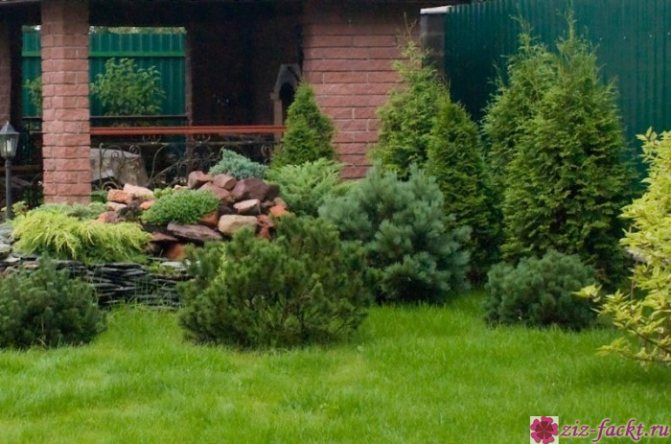
Crohn’s can take many forms:
- spherical,
- columnar,
- conical,
- ovoid.
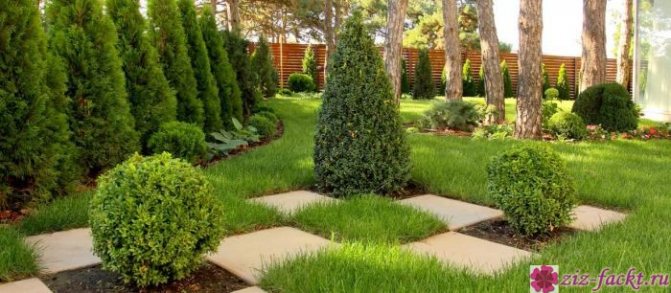
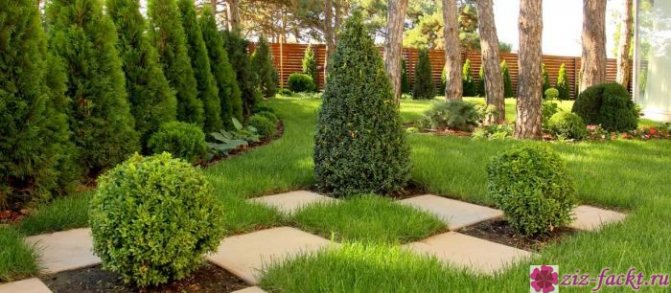
Since it grows slowly, it is very convenient to give it different outlines and create complex shapes.

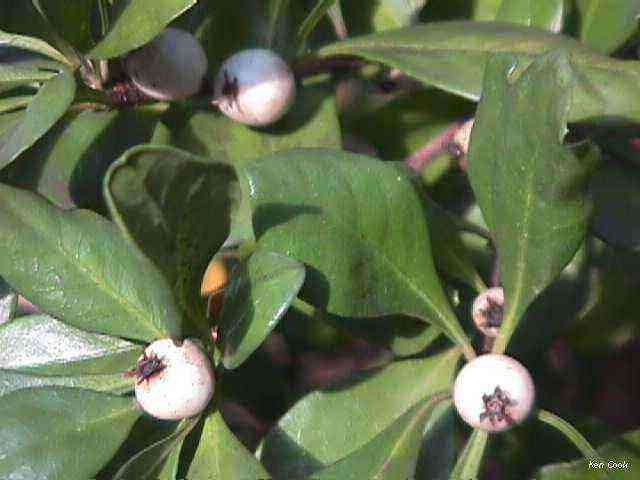
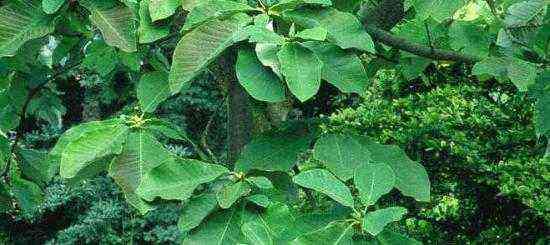


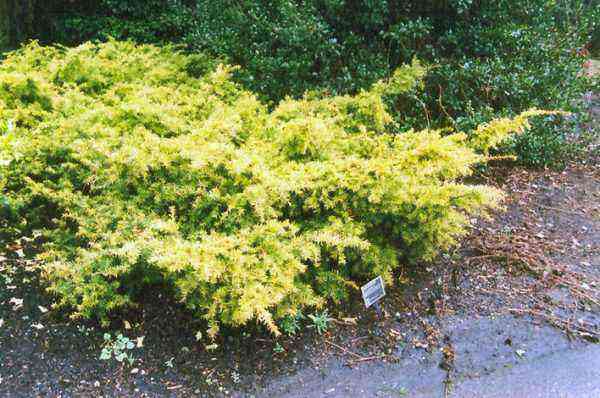
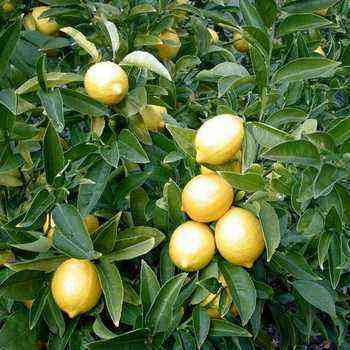

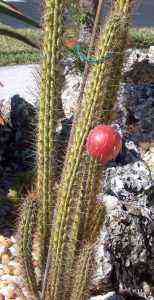
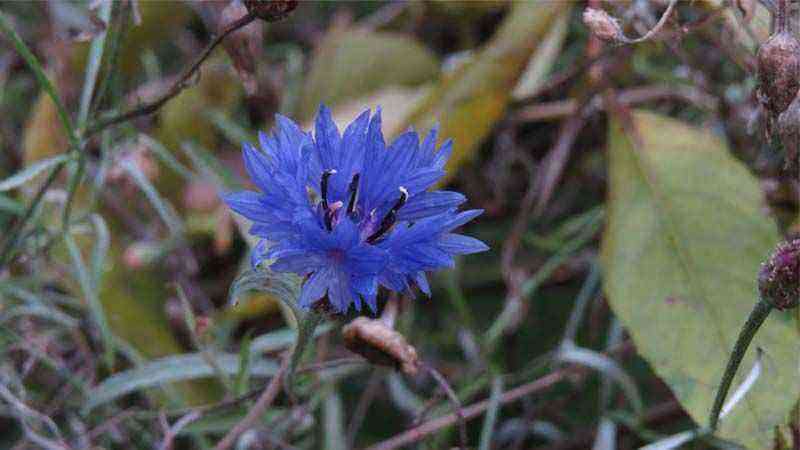
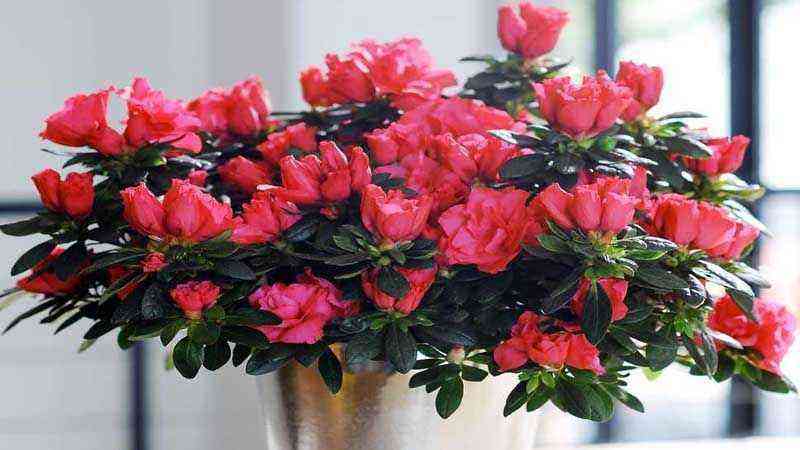
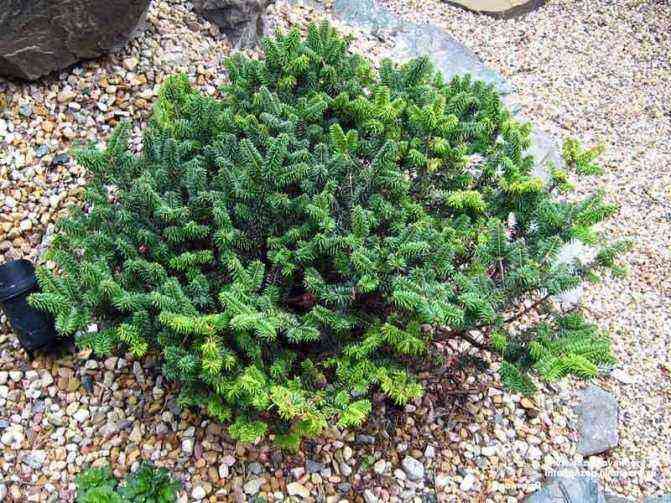

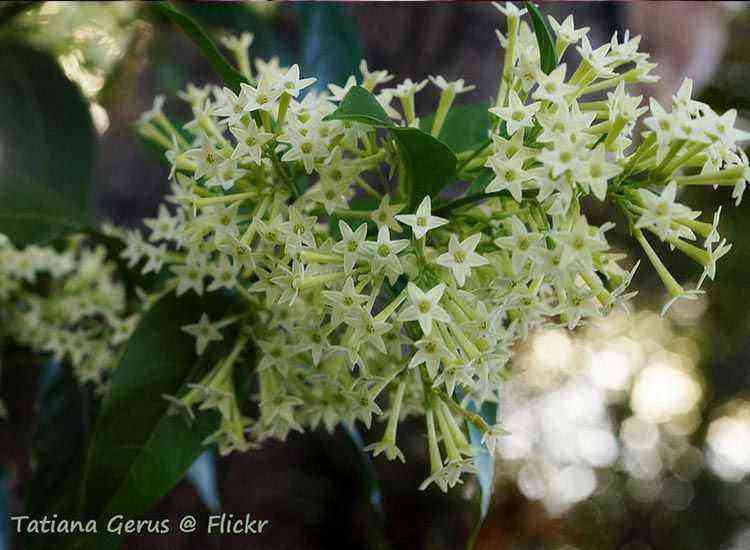
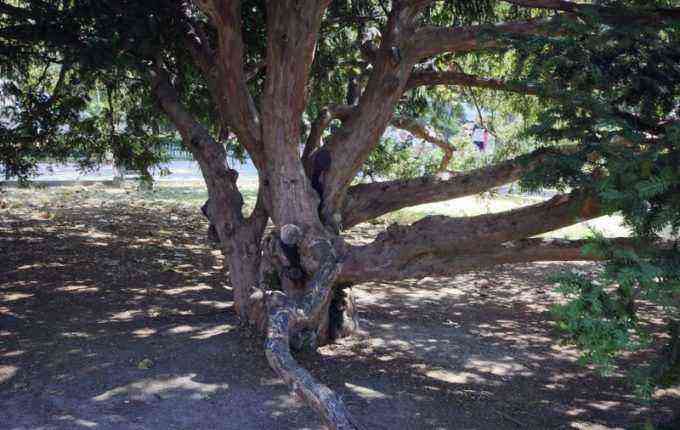
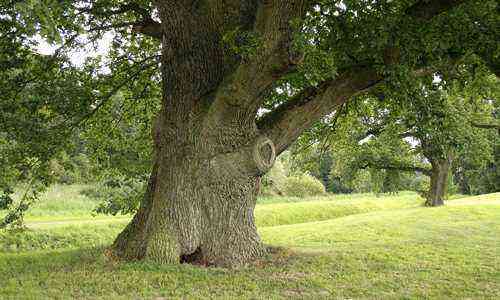
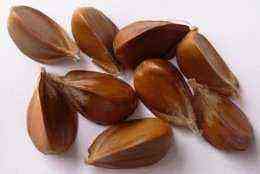
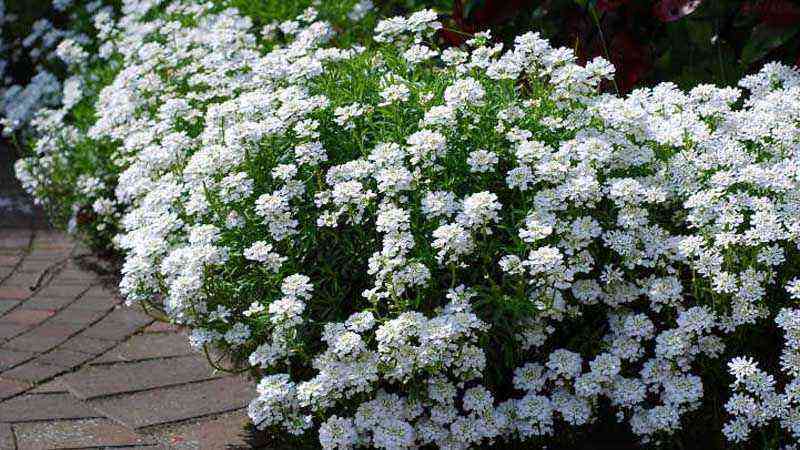
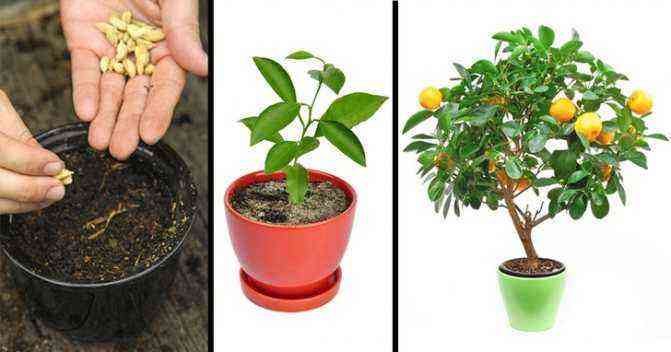
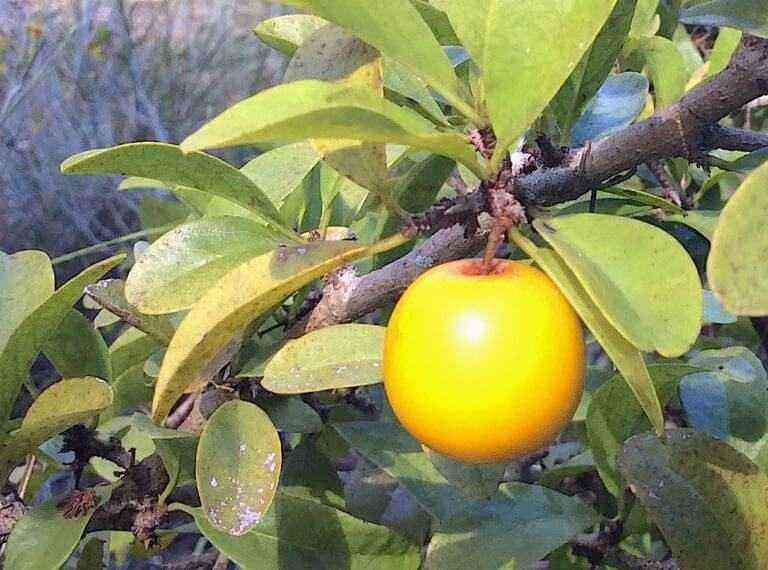
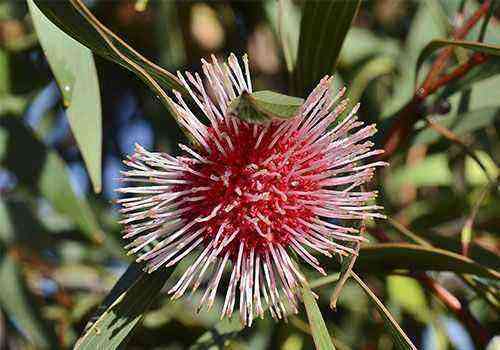
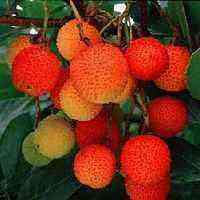
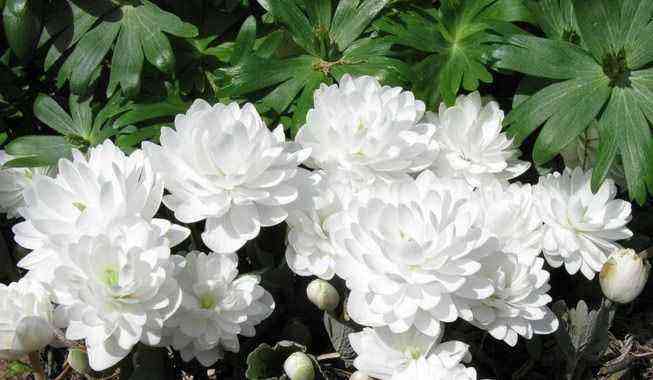
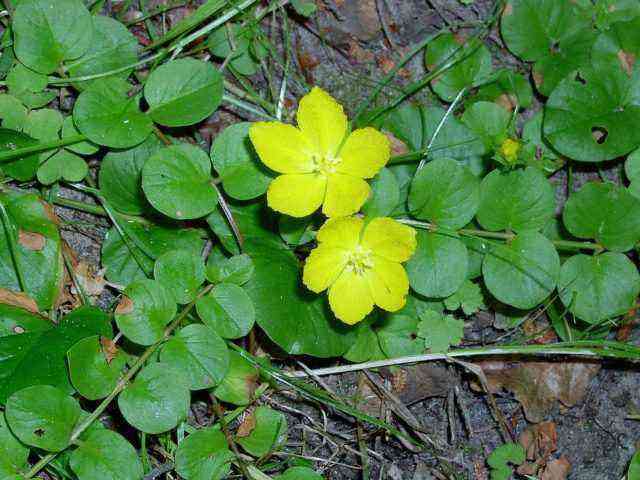
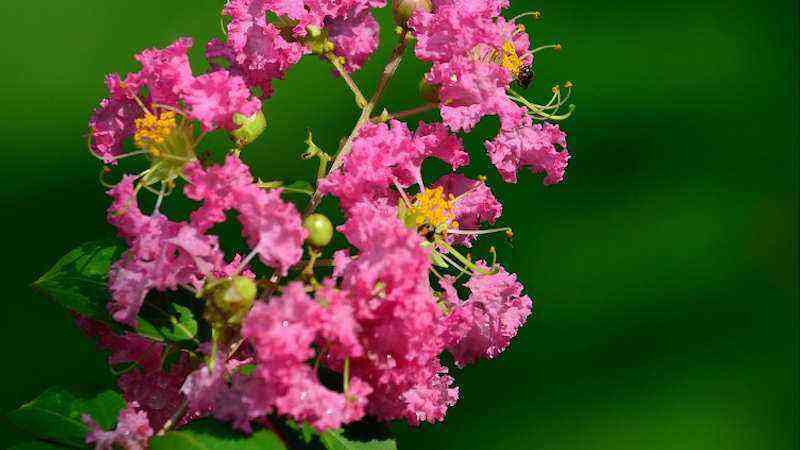
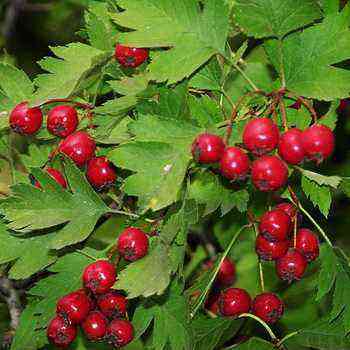
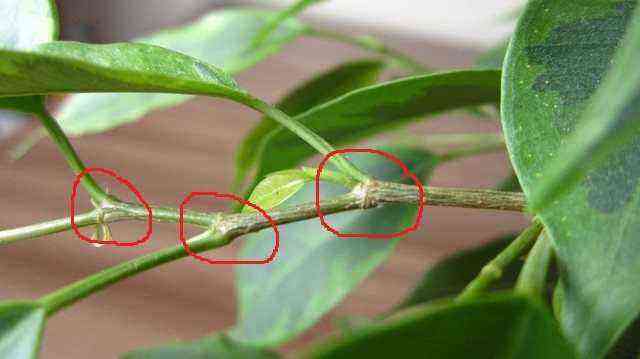
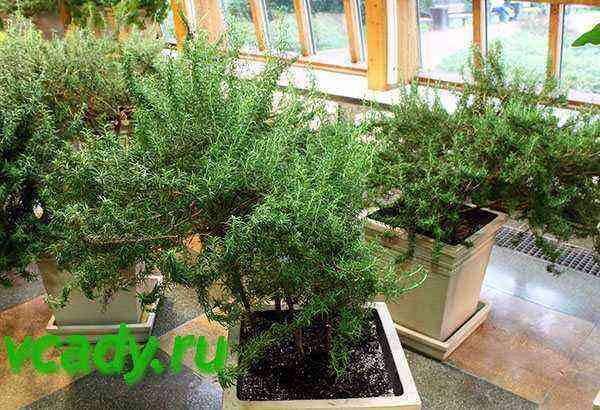
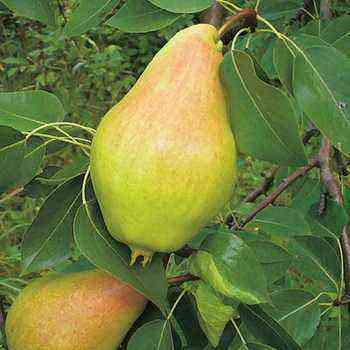
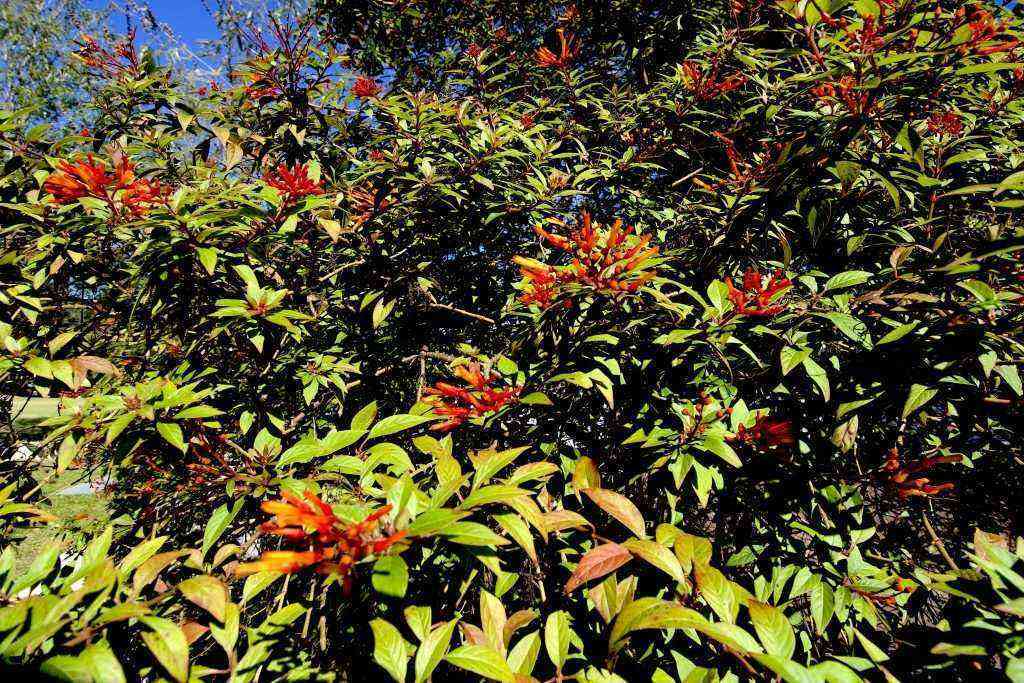
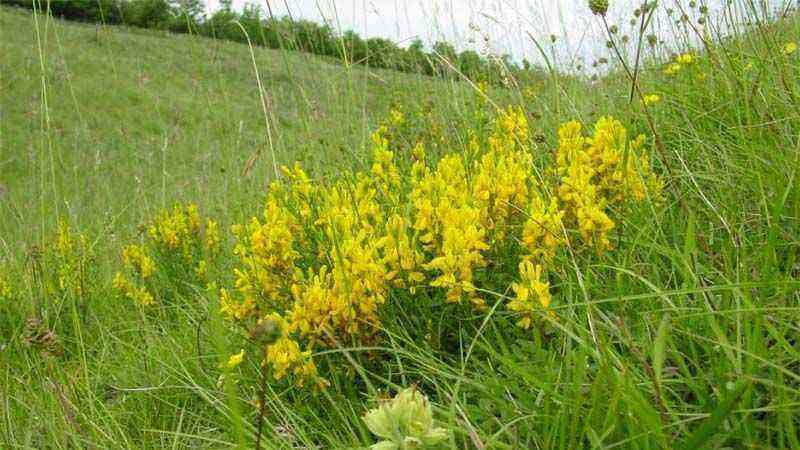
![Cultivo de Magnolia stellata [magnolia estrellada] Cultivo de Magnolia stellata [magnolia estrellada]](https://farmer-online.com/wp-content/uploads/2021/05/Cultivo-de-Magnolia-stellata-magnolia-estrellada.jpg)
